Jolla and SailfishOS
QiTOH - Part 3 - Adafruit Receiver
Lets see what the Adafruit receiver module can do.
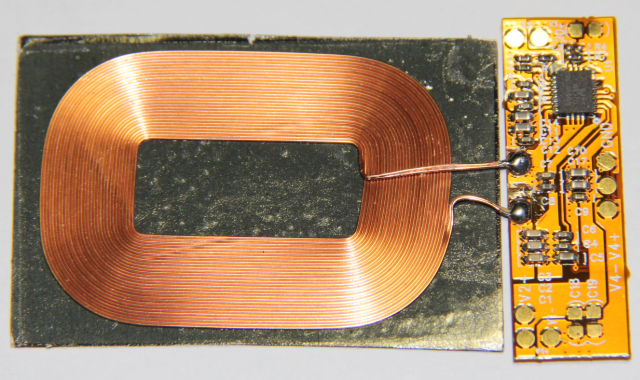
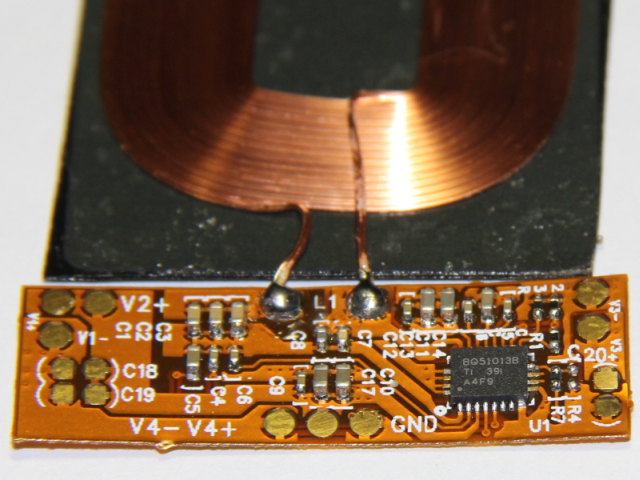
The chip used is a Texas Intruments BQ51013B, that according to the datasheet should be able to provide up to 5W. At 5V that would be 1000mA. Matching Jolla's external 5V port specification.

Some quick mechanical test shows, that it would fit in length and width without any problem. And since Adafruit uses a very thin PCB, I found that closing TOH is still possible.
- My orginal TOH was not very happy about it, tough.
I had some problems to close it all around and there was a serious bulk on the back.
Trying to get my white TOH of the phone was even more a fight than usual. - The TinkerTOH, with it's more relaxed fit did not put up that much of a fight. It got on and of ok. But this one too bulked quite a bit, so it did not lay flat on the table anymore (as it normally does).
For the tests I had the coil and the PCB laying completely on the battery (position relative to the phone more like in the picture above).
One could think about moving the receiver up and use the SD card indention to "level" the chip (like in the picture below).
Don't do that!
- You can not turn the receiver around.
The black tape on the back of the coil is a special ferro-magnetic material and is there to prevent the magnetic field to go beyond the coil (e.g. into the phone). If you turn the receiver on it's back to "store" the chip in the SD card indention, Qi charging will not work anymore. - You migth think of resoldering the coil and only turning the PCB around?
Bad luck! Than the chip is in the wrong position :-)
(Which BTW also appies to 1.) - 1.) and 2.) will still leave you with the problem of the coil needing some space.
- There is a good chance you brake the PCB.
It is very thin. If you put it in the position like in the picture below, the chip will push down the PCB into the SD card indention, once you close TOH. The PCB will deformate and there is a good chance that sooner or later a pin of the chip or any other part breaks contact with the PCB. - Also there is a little limiter in TOH, that prevents a lose fit SD card from falling out.
That one will also push onto the board (see 4.)
What it comes down to is, that even for the thin Adafruit receiver, we better design our own special QiTOH, that leaves enough room for the receiver.
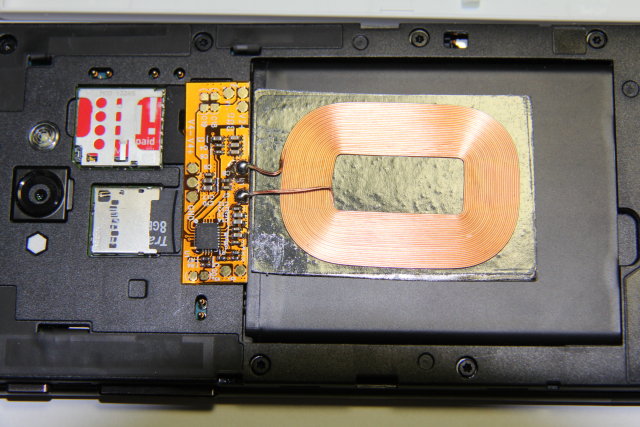
Charging the phone
Lets try to use the Adafruit receiver to charge the Jolla.
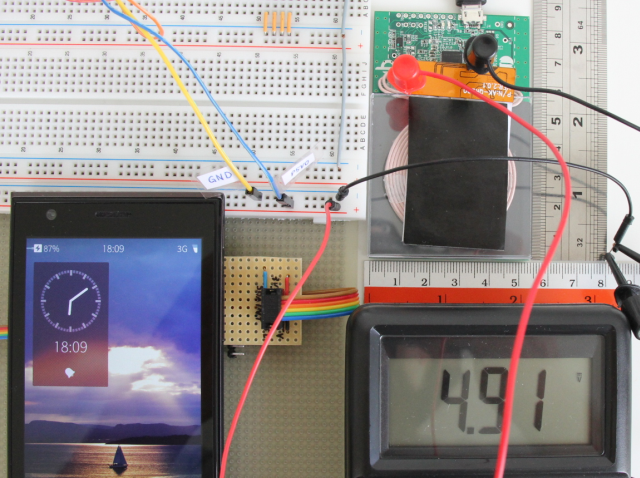
Using the 12W USB power supply from the later IDT receiver experiments, we see around 5V and 540mA at a charging state of 87%.

That is not as good as the results of the IDT kit (750mA at 88% charged).
It is also not as good as the 900mA Mano measured in his experiments. But for those we do not know how far his battery was already charged.
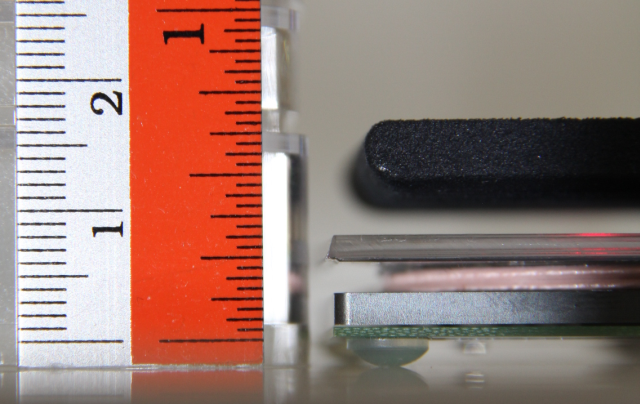
Finally, for the sake of completeness (and because I like the picture): Also the Adafruit solution manages an airgap of up to 5mm, before cutting the connection between transmitter and receiver.
Conclusions
- The Adafruit receiver has lost a little bit of it's charm.
- It does not fit into a standard TOH.
And while it would still be possible to build a thinner QiTOH, than with the IDT receiver, still the advantage of just glueing it into a standard TOH is gone.
- Not completely surprising is the fact, that the performance is not as good as that of the more expensive IDT module.